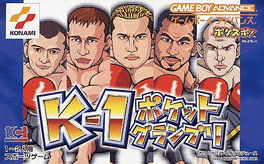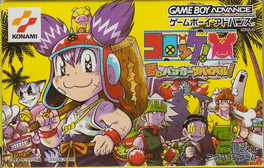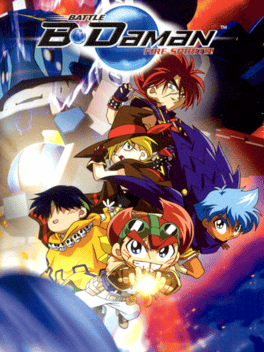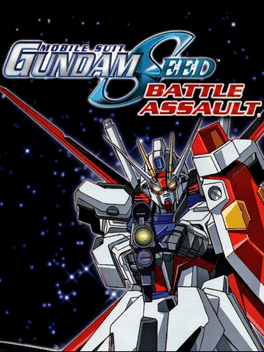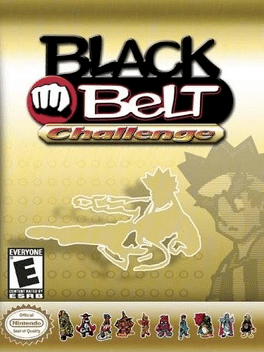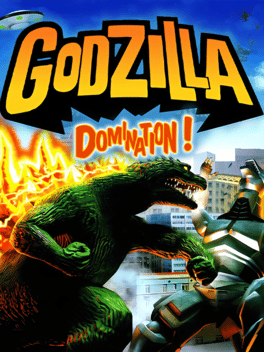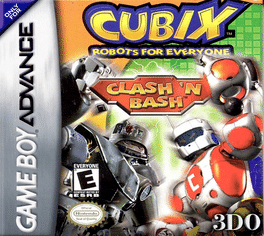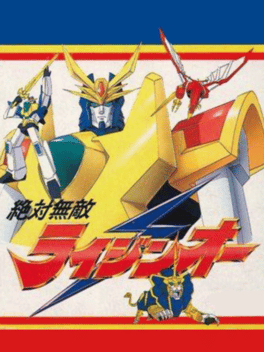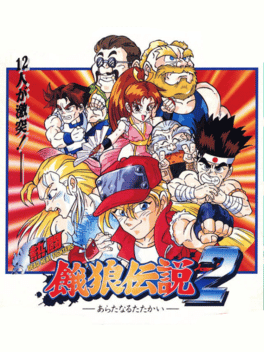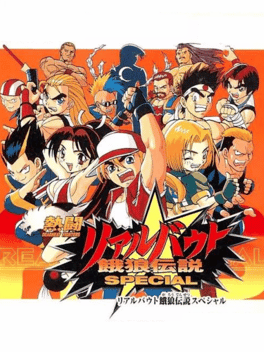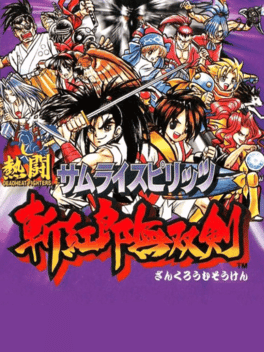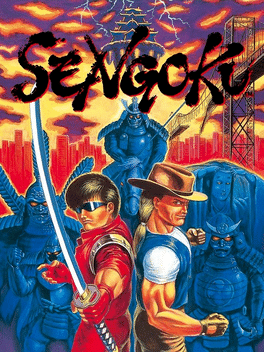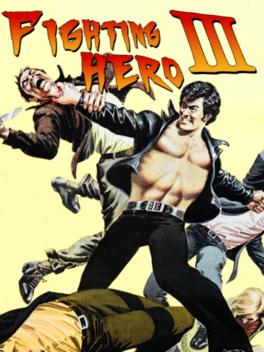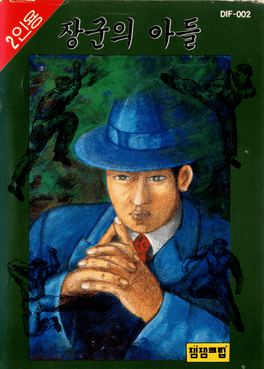Most Popular Nintendo 64 Games - Page 101
-
K-1 Pocket Grand Prix
2002
K-1 Pocket Grand Prix is a kickboxing game, published by Konami, which was released in Japan in 2002. K-1 Pocket Grand Prix is a fighting game developed by Daft Co. and published by Konami Corporation for Game Boy Advance. K-1 Pocket Grand Prix is a kickboxing game that uses the K-1 brand and real fighters. Players can choose from one of fourteen different fighters. Players can kick, punch, and use special moves. -
Groove Adventure Rave: Hikari to Yami no Daikessen
2002
Groove Adventure Rave: Hikari to Yami no Daikessen is an Action game, published by Konami, which was released in Japan in 2002. -
Croket! Yume no Banker Survival!
2002
The first game based on a manga series about a young boy who is trying to collect enough magical coins to resurrect his father. -
Flame of Recca
2002
Flame of Recca
2002
The Hokage Ninja Clan's strongest and most dangerous Madougu, "Tendou Jigoku" fell into the hands of Mori Kouran. In order to create the perfect body, he abducted the Hime with the power of healing, Sakoshita Yanagi, so that he could absorb her.In order to save Yanagi and break Mori Kouran's ambitions, Recca and his friends wanted to go immediately to the fortress city "SODOM"... Recca no Honoo: Flame of Recca is an Action game, published by Konami, which was released in Japan in 2001. -
Battle B-Daman: Fire Spirits!
2006
In this action game based on the toy franchise, you play as a young boy called Yamato who loves his B-Daman machines more than anything. You'll face off in B-Daman battles with Yamato's rivals, making use of special attacks to emerge victorious. Throughout the course of the game, you'll customize your machines and raise Yamato. Yamato will also meet characters both familiar and unknown on his journeys, including the warm-hearted Alan and the sinister-looking Goblin. Only a few have what it takes to become a B-Daplayer; will Yamato become the B-Dachampion? -
Mobile Suit Gundam SEED: Battle Assault
2004
Gundam Seed: Battle Assault, a great new action game, is the first Gundam game to become available on the Game Boy Advance. Gundam Seed is the next big thing to hit the world of Gundam. Based on the anime aired in Japan in 2003 and in the US on Cartoon Network TV in 2004, the game features 12 playable mobile suits from the show. Also included are seven gameplay modes including a two-player VS mode that allows gamers to link up to four Game Boy Advance systems using a Game Boy Advance Game Link Cable (sold separately) for head to head action. To make the game accessible to wide audience, the game includes a difficulty level for all players: choose automatic or manual mode, and then adjust armor, HP and energy gauges to maximize the challenge. -
Black Belt Challenge
2002
Black Belt Challenge
2002
The lost pages of the Book of Zero must be found, and you're just the brave warrior to take the job. Unfortunately, finding the pages will mean facing a number of deadly enemies, and you've got nothing but your bare hands and a black belt--to fight with. A truly amazing handheld fighting game, BLACK BELT CHALLENGE blends a powerful story with state-of-the art fighting to create a masterful combative experience like no other. Your choice of character will determine your motive for completing the Book of Zero, and each fighter will bring a different skill set to the arena. The game offers up a variety of modes to ensure high replay value and a huge fun factor. Packed with killer combos, incredible character animations, intuitive controls, and a series of great story lines, BLACK BELT CHALLENGE is sure to spawn a few sequels and imitations. Play against the computer or fight a friend. -
Godzilla: Domination!
2002
Six monsters battle through seven destructive locations in an attempt to prove themselves as the greatest monster to walk the Earth. Each monster has a personal set of punches, kicks and special moves to Dominate over the competition. Game features include 7 monsters each with their own home arena and special moves, power-ups and weapons revealed by destroyings buildings, five different modes including link mode to play against four friends, and customized fights for unlimited styles of gameplay. -
Guilty Gear X: Advance Edition
2002
Based on the original arcade game, it adds tag, survival, training, and 3-on-3 game modes. Game controls can be set to 3 or 4-button mode. It includes all fighters in arcade game except Robo-Ky. However, Ky Kiske's extra version uses Robo-Ky's "beta" moveset.. The 3-mode character selection from X Plus is included with this release. Characters can be edited to any colours, but do not inherit black select and gold select powers as in the X Plus game. -
Cubix: Robots for Everyone - Clash 'n Bash
2002
Something strange is happening in Bubble Town. Robots are going berserk because of Solex, the stuff that gives all robots their power. You must find each of the broken robots before the evil Dr. K and hits bad 'bots do, especially the scary and powerful Kolossal! -
Zettai Muteki Raijin-Oh
1991
This game is a one on one Mecha fighter where you control a giant robot straight out of a Japanese B movie and engage 8 equally giant creatures of darkness in mortal combat. -
Nettou Garou Densetsu 2: Aratanaru Tatakai
1994
The three lone wolves return to clash with new opponents in the "Sultan of Slugs" Battle Royale. After a year in training, forging bodies of steel, Andy, Joe, and Terry take on the world. -
Nettou Real Bout Garou Densetsu Special
1998
The supreme trial of strength awaits! 19 of Fatal Fury's hottest heroes collide! One year since the fearsome conclusion to "Real Bout", the hungry wolves ready themselves for a new battle, "Real Bout Special" - the paramount pugilistic proving ground! -
Nettou Samurai Spirits: Zankuro Musouken
1996
Cut or be cut! The power! The intensity! Samurai 3 is here! Twelve of the ages toughest double-identity warriors! Select personalities from "Chivalry" or "Treachery". Character moves and poses change with the personality you choose. -
Master Karateka
1989
Master Karateka
1989
The player controls an unnamed protagonist who is attempting to rescue his love interest, the Princess Mariko, from Akuma's castle fortress. The game exhibits a combination of a side-scrolling platform and fighting game elements similar to a beat 'em up. The gameboy version most notably includes an experience system. -
Sengoku Denshou
1993
Sengoku Denshou
1993
Sengoku Denshou is a port of Sengoku for the Super Famicom. A North American version was planned but ended up cancelled. -
AV Bishoujo Senshi Girl Fighting
1994
AV Bishoujo Senshi Girl Fighting is a fighting game running on the Street Fighter II engine. It reuses a lot of resources from Street Fighter IV and Kart Fighter with some Master Fighter II stuff mixed in and most of the girls are based off of characters from Ranma 1/2 Chounai Gekitou-hen and Bishoujo Senshi Sailor Moon Fighting. Chun-Li in the game is from Street Fighter II: The World Warrior and Marry is Bunny from Street Fighter IV. You are awarded with hentai every time you beat a round when the difficulty is on 3, 4 or 5. These are backported from various PC98 H-games, such as Ten Sen Nyan Nyan. -
Fighting Hero
1991
-
Fighting Hero III
1993
Fighting Hero III
1993
Fighting Hero III is a fighting game, created by NTDEC and released in 1993. While ostensibly a sequel to Fighting Hero, the two games share little in common besides their genre. -
General's Son
1992
General's Son
1992
The General's Son (Janggun ui adeul) is a 1-on-1 fighting game and based on the Korean gangster movie of the same name. Kim Du-han lost his mother at the age of eight, and he survives on the streets as a singing beggar. His natural-born fighting skills places him on the mean streets of Jongno with the kisaeng house Wumigwan at the center. He is soon recognized for his incredible strength and ability. He finds out through Shin Ma-jeok, the head of a student gang, that he is the son of General Kim Jwa-jin who fought against the Japanese army. Meanwhile, the Yakuzas expand their sphere of influence and try to take over the Jongno streets but Du-han protects the Korean vendors of Jongno and wins their respect. When the head of Wumigwan, Kim Gi-hwan is arrested, Du-han becomes the leader of the Jongno gang.
